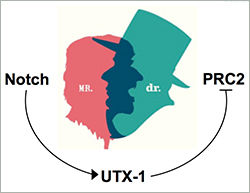Tiny molecules preserve stem cells
Freiburg research team shows what makes constant plant growth possible
Advertisement
Human life is dependent on the constant growth of plants, and it is the job of stem cells to see to it that this occurs. They are found at the tips of the shoots and roots, the so-called meristems. Stem cells can transform themselves into other types of cells and develop new organs, such as leaves, fruits, and twigs, throughout the entire lifespan of the plant. However, in order for the plant to continue growing and developing organs, several cells at the tips of the shoots and roots have to remain stem cells. In order to ensure that this is the case, the cells need signals to help them identify their position in the plant and trigger the appropriate developmental program.
A team led by Prof. Dr. Thomas Laux from the Institute of Biology III of the University of Freiburg has succeeded in confirming that plants need a micro-RNA at the tip of their shoots to prevent all of the stem cells from transforming themselves into other cell types. The Freiburg researchers used thale cress as a model organism for their studies. Their findings have been published in the journal Developmental Cell.
Micro-RNAs are very small molecules of ribonucleic acid (RNA) that do not encode any proteins themselves but rather prevent proteins from being generated from other RNAs. Thanks to their diminutive size, micro-RNAs can move from one cell to the next in plants.
Scientists are already familiar with one micro-RNA that informs meristem cells that they should specialize. However, this micro-RNA needs to be neutralized in the area where stem cells need to be preserved. Thomas Laux, member of the Cluster of Excellence BIOSS Centre for Biological Signalling Studies, has now succeeded in demonstrating that there is a second micro-RNA that serves precisely this function, thus preventing the stem cells from transforming.
The newly discovered micro-RNA, the stem cell preserver, is only produced in one particular cell layer, the epidermis of the tip of the shoot. The micro-RNA only reaches several underlying layers of cells near its home in the epidermis, all of which become stem cells. The more distant areas do not receive enough stem cell preservers, and the cells there transform themselves into other cell types. In this way, the plant can preserve the stem cells at the tip of its shoots and thus develop leaves, blossoms, or fruits regardless of environmental influences.



























































